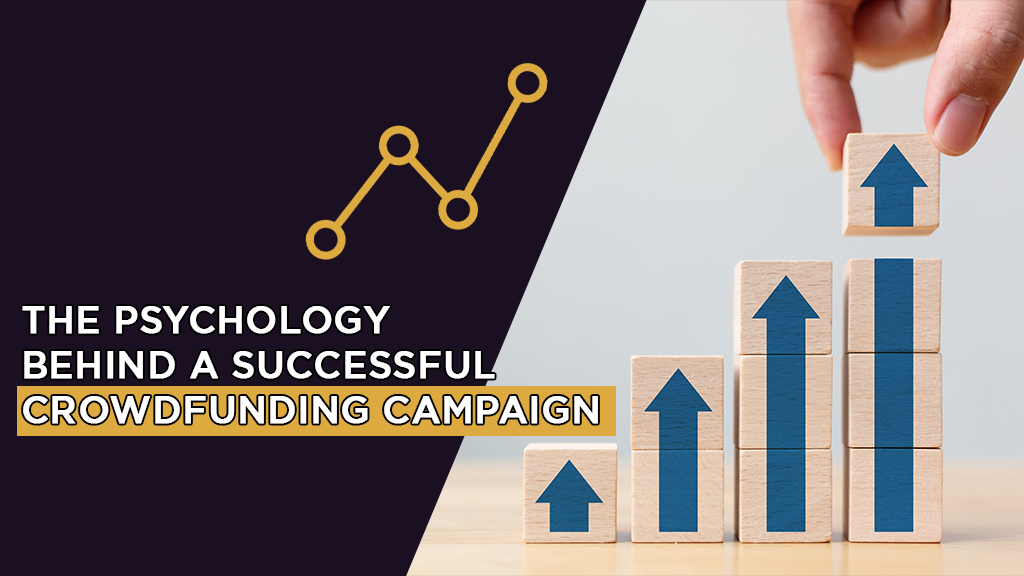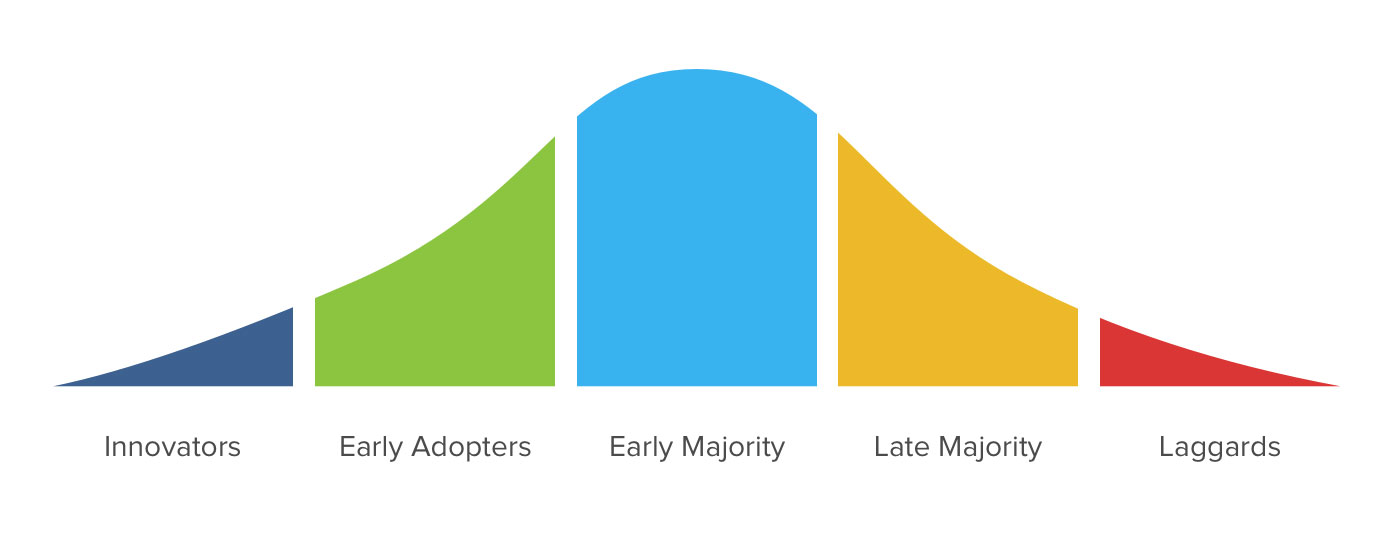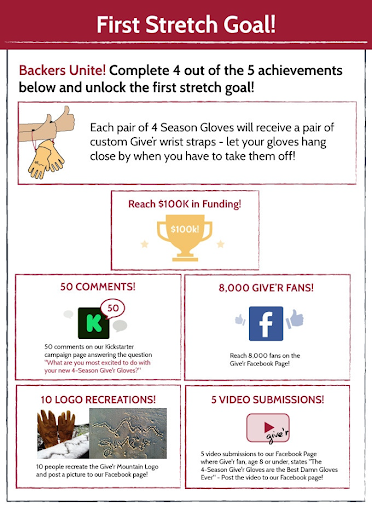
UPDATED: Hey, this is Mark Pecota, the CEO at LaunchBoom. I updated this article on March 27, 2024. There was criticism that some of the language used in the original article came across as treating the backer like someone to be taken advantage of. I agree with the criticisms of the phrasing and we don’t ever encourage or endorse taking advantage of your backer. Here’s the original archived version so everyone can see the original text.
There are so many factors that can impact the result of a crowdfunding campaign. If you’re familiar with LaunchBoom’s strategy for success, you already know some of the marketing methodologies that can help you outperform traditional crowdfunding methods.
However, you might not be aware of the psychology behind successful crowdfunding campaigns — in relation to both creators and backers.
To do this, you need to understand not only the correct creator mindset but the mindset of crowdfunding backers as well. Once you have a firmer grasp of these concepts, it will help to alleviate a lot of the doubt surrounding a major endeavor like a crowdfunding launch.
Let’s start with the creator mindset, and dispelling any myths about success in crowdfunding.
Key takeaways for understanding the psychology behind crowdfunding success
- Understanding the measures of successful crowdfunding, ranging from the goals you must hit to the business metrics you must calculate
- Knowing the limiting beliefs that have a negative psychological impact on creators, and how to overcome them
- Leveraging crowdfunding backer psychology to generate the most funding you can through marketing, design, and upselling tactics
Contents
- What can we consider a successful crowdfunding campaign?
- How to build the right psychological mindset to have as a creator
- How to create a successful campaign by understanding backer psychology
- Examples of successful crowdfunding campaigns
- Use a crowdfunding platform to run your campaign
- Final thoughts on crowdfunding psychology
What can we consider a successful crowdfunding campaign?
The first thing any creator must understand is that despite our track record and experience, there is no perfect crystal ball method we have that can tell you whether or not you will crowdfund successfully. In reality, only 41.15% of campaigns are successful on Kickstarter.
That being said, there are still many technical and psychological factors you can harness that will help you reach your crowdfunding goals — and that starts with knowing how to define success.
Over the course of LaunchBoom’s existence, we’ve been able to identify what we believe are the key crowdfunding tips for success. They are as follows:
1) You prioritize and achieve these goals:
- Acquiring customers profitably and validating you have a market
- Being able to pay for your first manufacturing run
- Shipping your product to your backers on time (or close to on time)
2) You understand these key aspects of your business:
- Business metrics:
- Cost to produce your product
- Cost to ship your product
- Cost to acquire a customer
- Your customer:
- Which audiences are most likely to buy your product?
- Which product messaging resonates the most with those audiences?
- Which customer acquisition channels are most effective?
One of the biggest psychological hurdles in the way of any new endeavor is the uncertainty of what to do. Now that you have a roadmap for how to do a successful crowdfunding campaign, you can focus your efforts on hitting each milestone to maximize your chance of reaching your funding goals.
How to build the right psychological mindset to have as a creator
Knowing the metrics for success is one major advantage to have, but it’s also important to get into the right creator mindset. Everybody has limiting beliefs that can undermine progress toward a successful crowdfunding campaign.
Let’s address some of the most common limiting beliefs in crowdfunding that can have a negative psychological impact on a campaign.
Limiting belief #1: I don’t have time to launch my product
This is often the first hurdle that holds people back from even taking the first step toward crowdfunding. The truth is, launching a product isn’t easy or quick; it takes a lot of hard work and many hours we feel we don’t have.
However, that’s the biggest myth about this belief. We’ve seen creators pull off successful crowdfunding campaigns while having full-time jobs, families, and other obligations. If you can overcome this limiting psychological belief, you’re well on your way to crowdfunding success.
Here are a few things you can do to help if you are struggling with finding time:
- Create a detailed plan using the measures of success detailed above.
- Create a schedule you can follow that dedicates time to working on your campaign.
- Commit before you start.
Limiting belief #2: The timing isn’t right … yet
One of the easiest ways to procrastinate is to tell ourselves that the timing isn’t right. While waiting for the right timing does play a role in some parts of crowdfunding, it shouldn’t be an excuse for putting off doing the dirty work as you progress towards launch.
Even if you manage to start, it’s vital that you stick to the schedule you committed to. Just remember: the “right time” doesn’t really exist. Don’t let this psychological trick limit you.
Limiting belief #3: I’m not a marketer
Many product creators are very passionate about their products. They spend a lot of time in ideation, design, and refinement to make sure they get the best result they originally envisioned.
Marketing, on the other hand, can sometimes become just an afterthought for them, considered something to eventually be outsourced. This is the wrong mindset to have.
Knowing marketing is one of the key ingredients for how to crowdfund successfully. You don’t have to be an expert, but you need to know the fundamentals. If you believe that people’s lives will be better after buying your product, you need to learn to communicate that belief to people who will back your campaign and make your product a reality.
Limiting Belief #4: I don’t have a team
Trying to do anything alone can be daunting, especially when it comes to launching a product or starting a new business. You might not have the resources to surround yourself with a well-trained team, but we promise that you have a community of like-minded people behind you.
LaunchBoom has been able to build a community in crowdfunding, and we always strive to eliminate this psychological hurdle of “one against the world” that some people have. To access the LaunchBoom Community, you can click here, or fill out a form at the bottom of this post to schedule some time to talk directly with one of our product launch specialists.
Limiting Belief #5: I don’t have enough money to launch on my own
Bringing a product to life isn’t cheap. That’s the reality; however, crowdfunding makes it more affordable than most people realize.
More important than saving tens of thousands of dollars is the simple act of getting started, as well as carefully validating whether your idea has demand or not. Once you’ve validated your product, you can use the tools and resources available through LaunchBoom to dramatically reduce risk in the prelaunch, launch, and post-launch phases of your crowdfunding journey.
Just remember that ultimately, crowdfunding reduces your risk. By acknowledging that fact and taking the right steps, you will be able to accomplish more than you could by spending money you don’t have on a traditional product launch.
Limiting Belief #6: The launch might fail
We’ve touched on this already, but most crowdfunding launches fail. Fear of failure is normal and understandable, but regret is something that you have to carry forever.
Armed with the knowledge we’ve gained over hundreds of launches on crowdfunding, we can promise that failure in crowdfunding is not as bad as it sounds. We’ve seen many get knocked down, get up again, and eventually find success. Don’t let fear hold you back from even trying.
Limiting Belief #7: Impostor syndrome
Have you ever asked yourself: “Who am I to launch a product?” Imposter syndrome can creep its way into our heads whenever we lack confidence in ourselves. It’s perfectly natural.
One thing we’ve realized as we’ve grown in this industry is that most people don’t know what they are doing. Most of the time, people are just figuring things out as they go, taking everything one step at a time and solving problems once they occur.
We’re not saying you have to fake it until you make it, but rather have the mindset that there are no gatekeepers in crowdfunding. You’ve got a product and a dream just like everybody else. This community is here to support creators like you, so it’s up to you to show them why. This is where knowing backer psychology can help you win their support.
How to create a successful campaign by understanding backer psychology
Now that you know what mindset you need for successful crowdfunding, it’s time to build your campaign by understanding backer psychology. If there’s one thing that unifies most backers in crowdfunding, it’s where they are situated on the product adoption curve.
The product adoption curve visualizes the different groups of people who adopt new technology, ideas, or products. Here’s what it looks like:

“Innovators” and “early adopters” are the people who back crowdfunding projects, with everyone after that considered to be part of the mass market. So what does that indicate about the cognitive biases backers have that we can find useful?
At LaunchBoom, we characterize backers as “people who want cool stuff, at a discount, before anyone else.” Because many of them are actively seeking to discover new products before they are mainstream, they are naturally prone to taking more risks with their purchases. This is the first behavior to understand.
Behavior #1: Less risk averse
Because the desire for new product discovery is prevalent among the crowdfunding community, we know that they are willing to take some risk with their money and back products that don’t exist yet. And while there have been scams on Kickstarter and Indiegogo in the past, that has not stopped the crowdfunding community from pledging money to creators with no products — or even a working prototype.
People are willing to take chances on new products, but the risks of doing so are always at the back of their minds. As a creator, the best thing you can do for potential backers is to put their minds at ease. Good communication in crowdfunding, like using the Updates feature on your campaign page, being active on your social media channels, and always addressing backer questions and concerns are some of the most effective things you can do to assure people that they are not being scammed.
If you can sell to people that you aren’t going to cheat them out of their money, they are unlikely to see any risk in backing your campaign.
Behavior #2: I help you and you help me
There’s a psychological principle called “reciprocity” that can be used in marketing to create value by promising to give something in return for a specific action. You see this a lot on platforms like Yelp, for example, where businesses can offer free food or beverages in return for proof that they left a review or liked a page.
There are some creative ways you can employ to make this concept work in your crowdfunding campaign as well. Here are some possible ideas:
- Exclusive perks: Offer the chance to win an exclusive perk with their product for performing an action that gets your campaign page to more eyes, like a share via their social media.
- Cross-promotions: Consider cross-promoting with another campaign creator. This is a more passive reciprocity in which backers can see you engaging positively with the community, thereby giving another reason they should back your product.
Behavior #3: Social proof creates more trust
In crowdfunding, social proof and validation are extremely impactful. Because your product likely doesn’t exist yet, there are no Amazon or Google reviews for people to consult. As a result, any proof you can provide that your product works can alleviate a lot of doubts from potential backers.
While it is great to be able to get some flashy logos of reputable news sources on your campaign page, testimonials from real people can be just as reassuring in crowdfunding. Don’t fake it, because it’s wrong and the crowdfunding community can usually sniff out fabricated social proof anyway.
Use social proof in every phase of your campaign. You can leverage social proof in prelaunch advertising, in your campaign video, and in a testimonials section on your campaign page. Let people know that your product is legitimate, and do it in a way that they know it’s real.
Behavior #4: Design your campaign with the right colors
The psychological effects of color in marketing have been used since advertising could be sold to consumers in more than just black and white. Color plays a role in everything from your logo, to your branding, to designing a landing page that actually converts.
Here’s a general breakdown of what colors are associated with buyer moods:

As you develop your strategy for marketing your product, think of what you want people to feel when they think of your brand. Use the colors that accentuate the feelings you want backers to associate with your product to help influence their decision to back your campaign.
Behavior #5: The last seat in the trip
The fear of missing out (FOMO) is a feeling that many marketers use to drive engagement and conversions. At every point along your crowdfunding campaign funnel, you want to think about how you can compel leads to get further toward the next goal.
You can think about it in these concepts:
- Exclusivity: This comes into play most effectively when building your prelaunch email list. Your VIP list, as we call it, is 30 times more likely to back your campaign than the average person, and that’s because of the exclusive perks you can offer to them when they join that list.
- Scarcity: Scarcity is one of your best psychological tools for upselling. When it comes to bonus perks like add-ons, you can tell your backers that there is a limited quantity, which is an effective way to get people to want it.
- Urgency: This one operates much in the same way as scarcity, but uses limited time instead of quantity to compel people to buy. Use it in your marketing as your campaign winds down to try and get a boost in funding before it’s over.
Behavior #6: People connect with people
Crowdfunding is social by nature, and backers want to feel like they know a brand more intimately on these platforms when they pledge. To do this you can designate yourself, or someone else to be the face of your product.
Letting people feel that there are actual human beings behind the project makes everything seem more familiar. Be sure to let backers see the same face (or faces), and voice (or voices) throughout every stage of the campaign. Be consistent across audio and visual collateral, and let people build that personal connection with you and your brand.
Examples of successful crowdfunding campaigns
While it’s helpful to understand backer psychology for crowdfunding success, it’s even better seeing it being put into practice. Let’s take a look at some of the most successful campaigns that made use of the psychological understanding discussed in this post.
How Give’r used reciprocity
Give’r Gloves, a campaign that raised $270,942 on Kickstarter, is an excellent example of using reciprocity to incentivize backers to share the campaign. They had already reached their funding goal, but that didn’t mean the battle was over. They were still able to tap into backer psychology to raise as much money as they could.
How did they do it? By creating stretch goals for their Kickstarter campaign fueled by reciprocity. Here’s a look at one of the stretch goals they used:

The creators challenged their backers to complete four of the five listed achievements so that they could unlock special add-ons for the main product.
Stretch goals like this can re-engage the community around your product and encourage backers to help your campaign rally together and reach new milestones.
How Midronome went from failure to success using the creator mindset
In 2022, the creator of Midronome, Simon Lasnier, failed to reach his funding goal on his Kickstarter campaign.
He had designed a product that he knew would help fellow musicians, adopted the creator mindset, and took the daunting plunge into crowdfunding to bring the Midronome to life. After pressing Cancel on his campaign, it would have been easy to let the psychological trauma of failure stop him from trying again, but a true creator mindset wouldn’t give up on the promise of crowdfunding.
As we’ve touched on, crowdfunding allows you to fail small. For Simon, and many others like him, that was the case. With just a few changes to his crowdfunding process — and some help from LaunchBoom — he was able to relaunch and surpass his funding goals.

Creators like Simon who are able to get back up again after a tough knockout prove the advantage of being in the right psychological mindset as a creator. Even in failure, these creators are given an edge that will help them identify their mistakes, make the necessary corrections, and succeed in the end.
Use a crowdfunding platform to run your campaign
There’s a lot to consider when deciding between Kickstarter and Indiegogo and which will help in putting your newfound understanding of crowdfunding psychology to the test. And while choosing the right campaign platform for your product is important, we believe ultimately it’s the LaunchBoom strategy that’s the perfect platform creators can use to springboard into crowdfunding success.
We’re always in a state of constant improvement, trying to find new ways to help backers bring their products to life. Success is never guaranteed, but what is guaranteed is that LaunchBoom is here to support you.
Whether you’d like to learn more about overcoming the psychological hurdles of getting started, or want to sharpen your understanding of backer psychology, we have you covered.
Final thoughts on crowdfunding psychology
When thinking back on creators like Simon and his Midronome, the most amazing thing is analyzing what mistakes they were able to correct for success.
Mistake number one was not building a big enough pre-launch email list. Mistake number two was not using the time-tested LaunchBoom reservation funnel. And mistake number three, which ties back to one of the major mistakes in creator psychology: going at it alone.
Achieving success on your own is an amazing feeling, but is it worth the risk of failure by refusing the help of others? Take it from Simon, us, and all the creators we’ve worked with over the years: Do yourself a favor and set your mind at ease by working with a community that has your back.
To get started, just fill out a form at the bottom of this page and we’ll put you in touch with the perfect person to help you wherever you may be in your crowdfunding journey.




